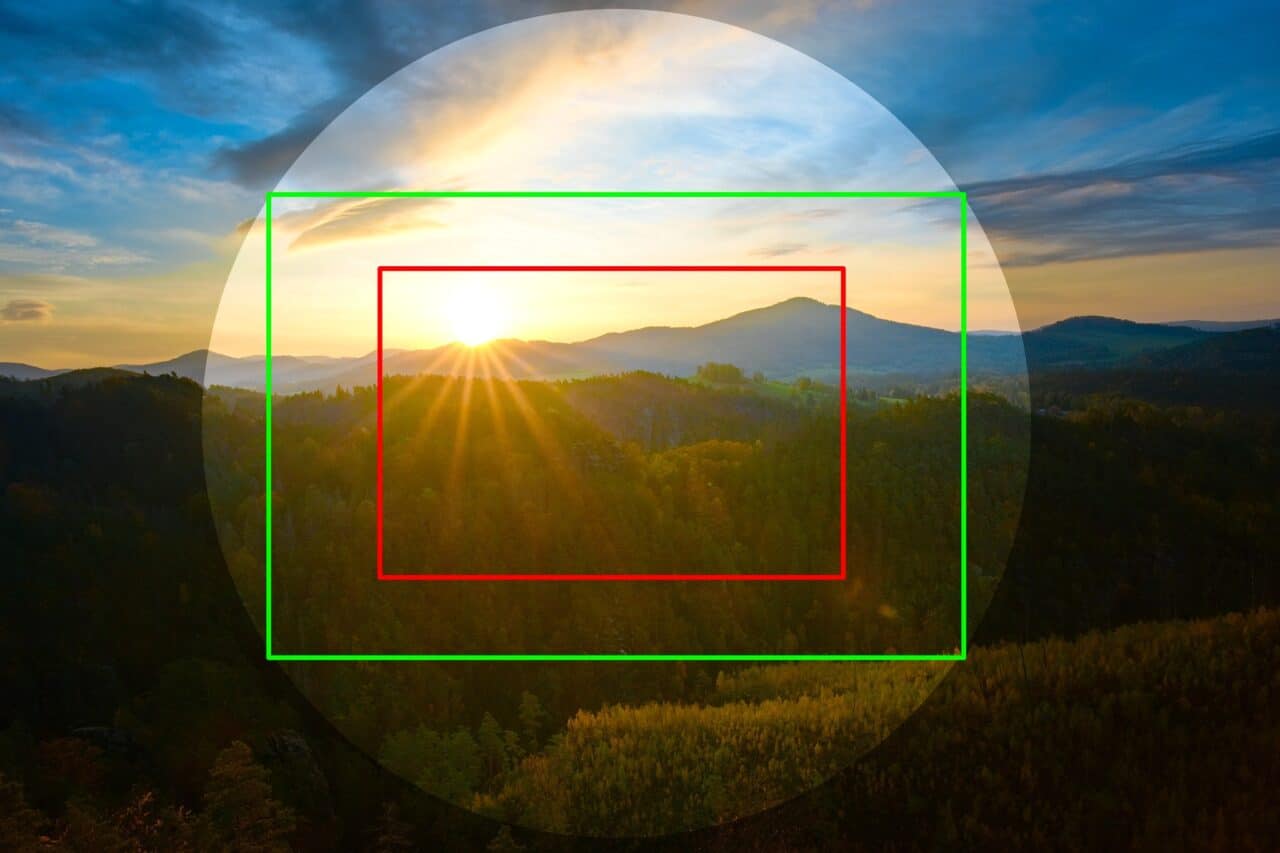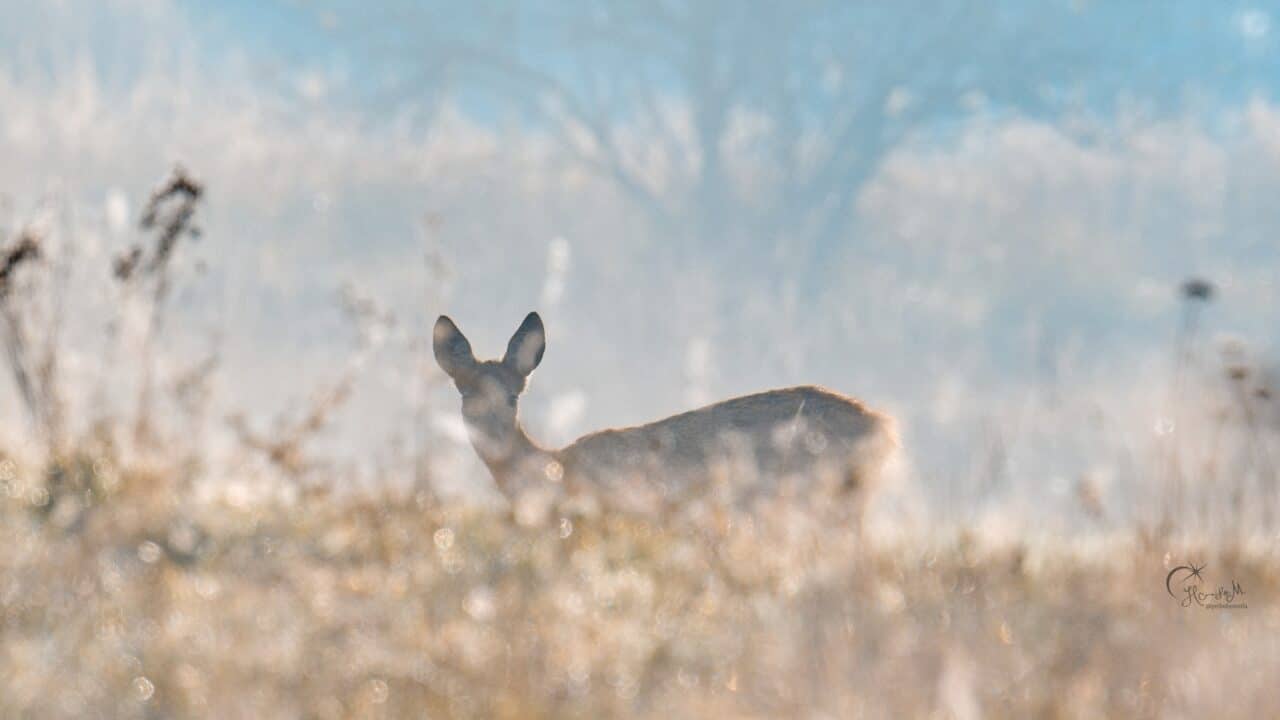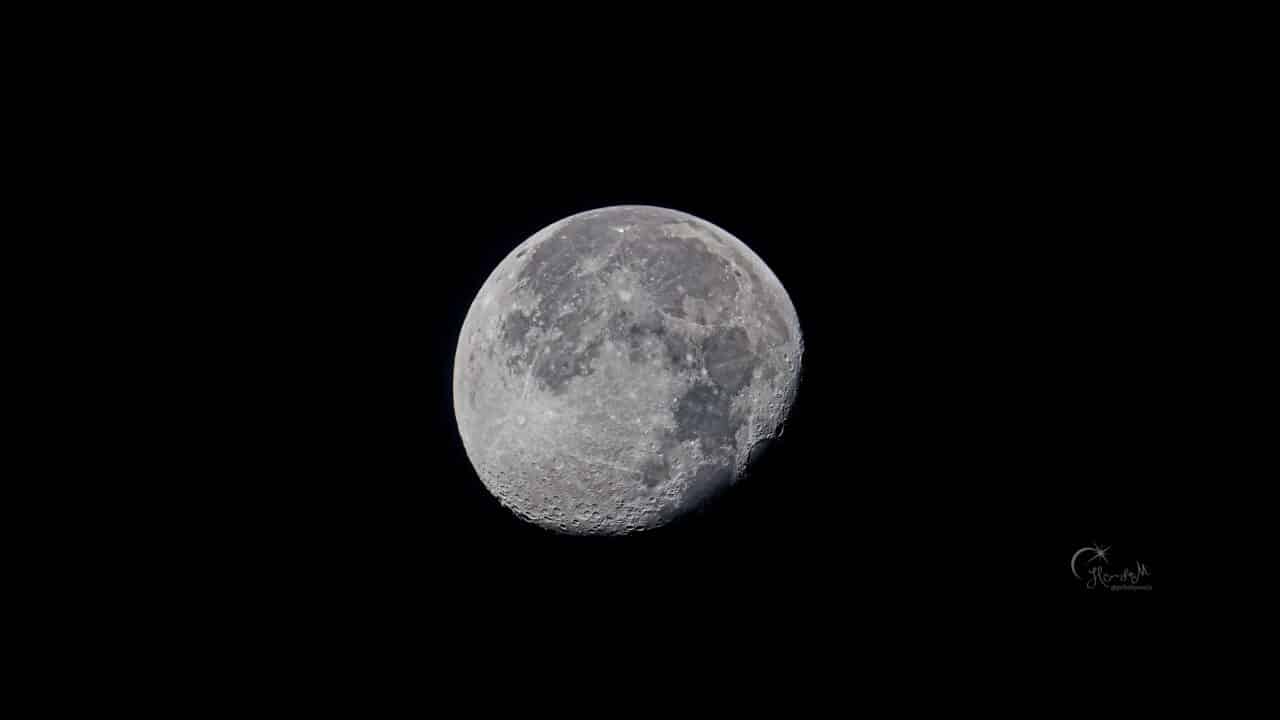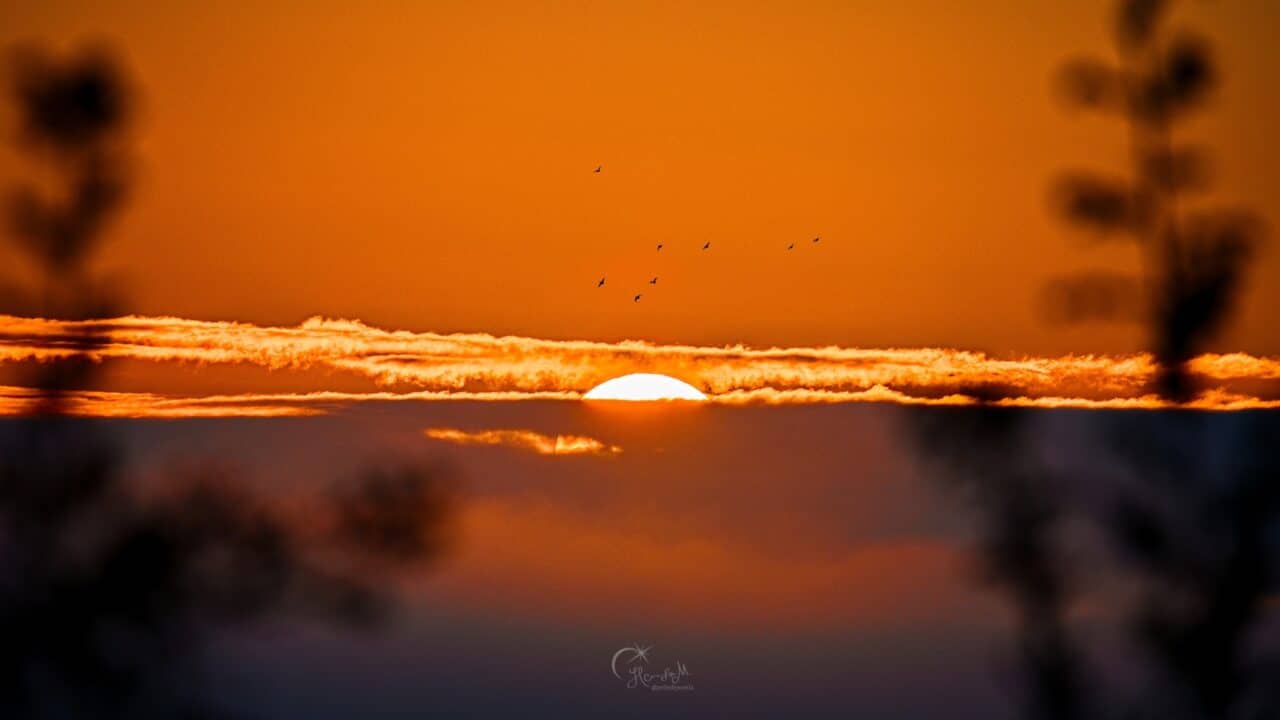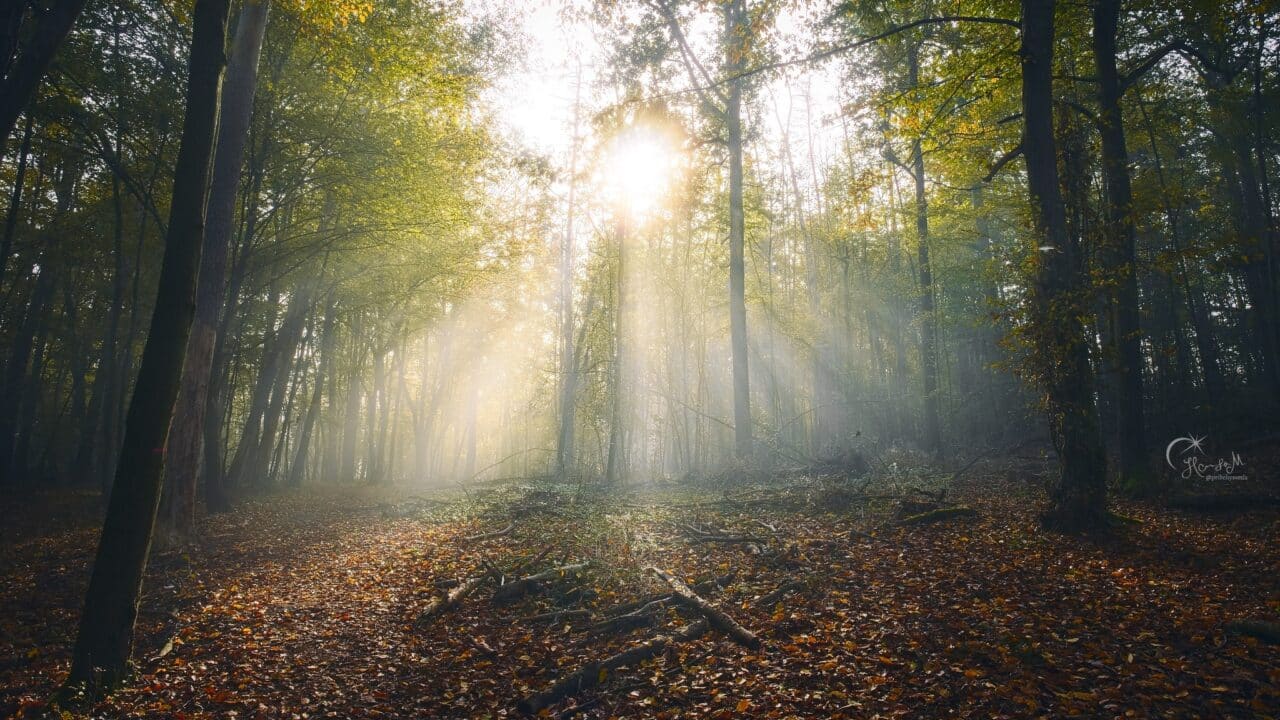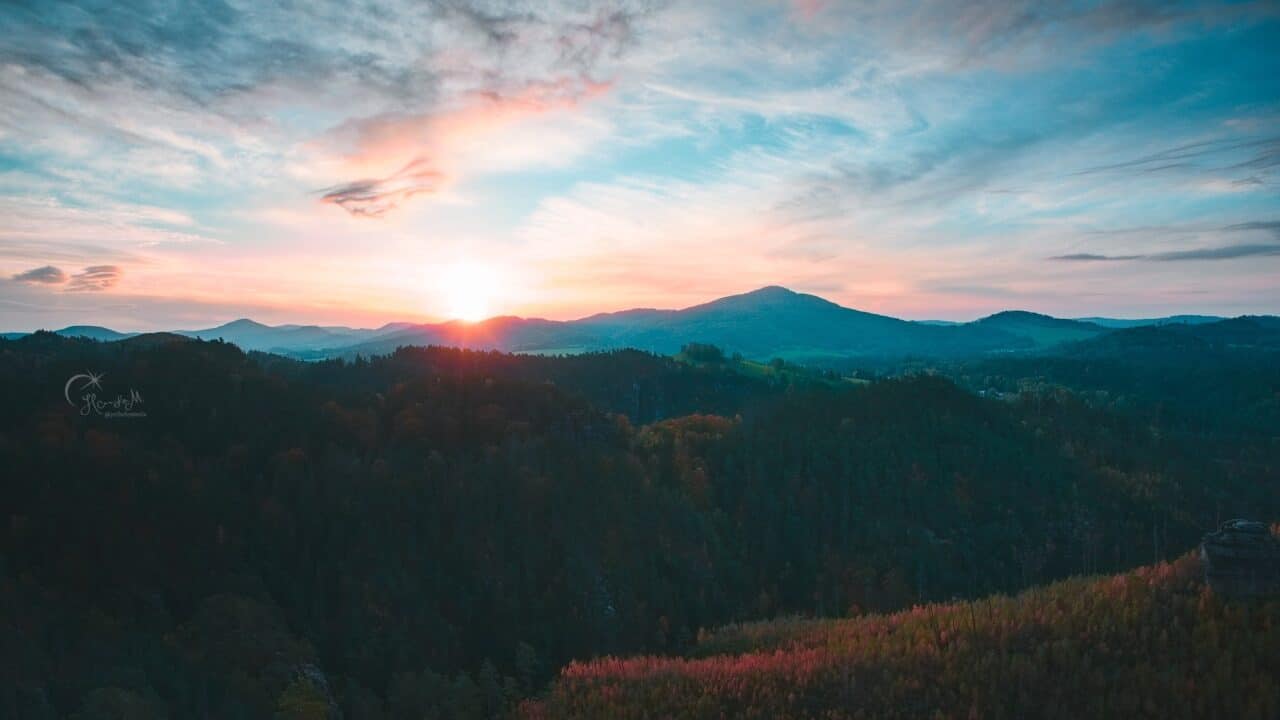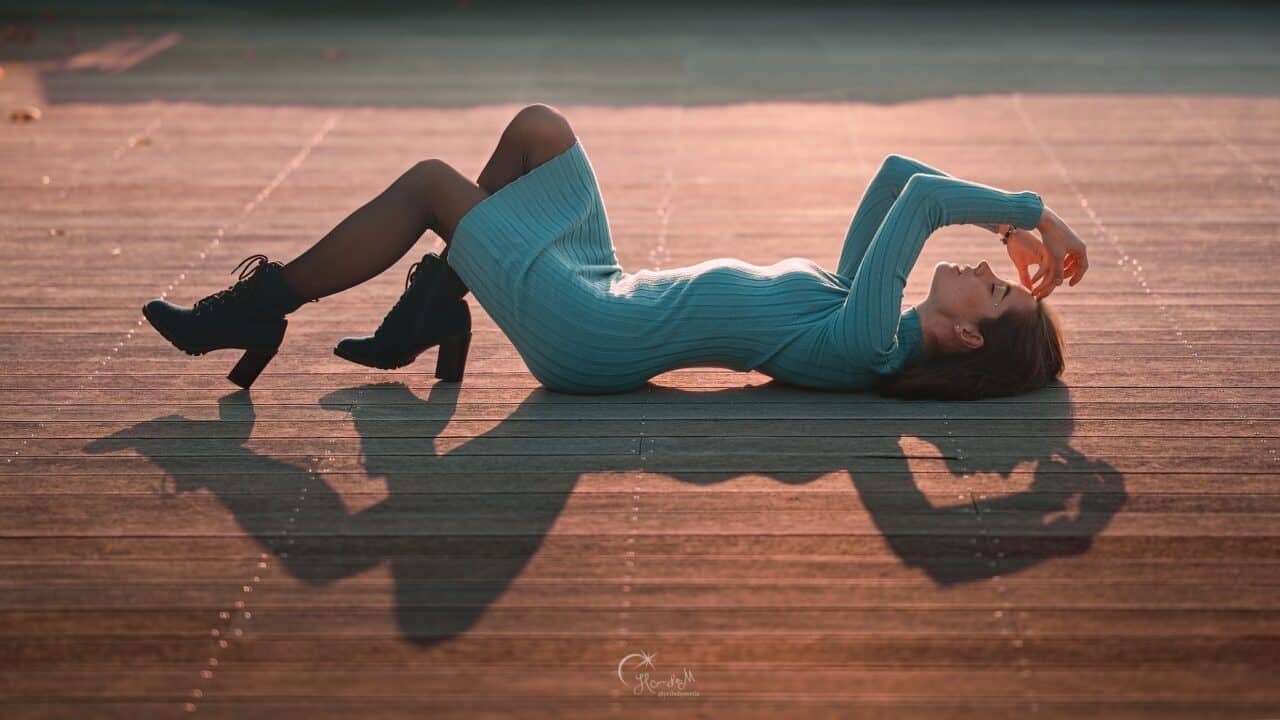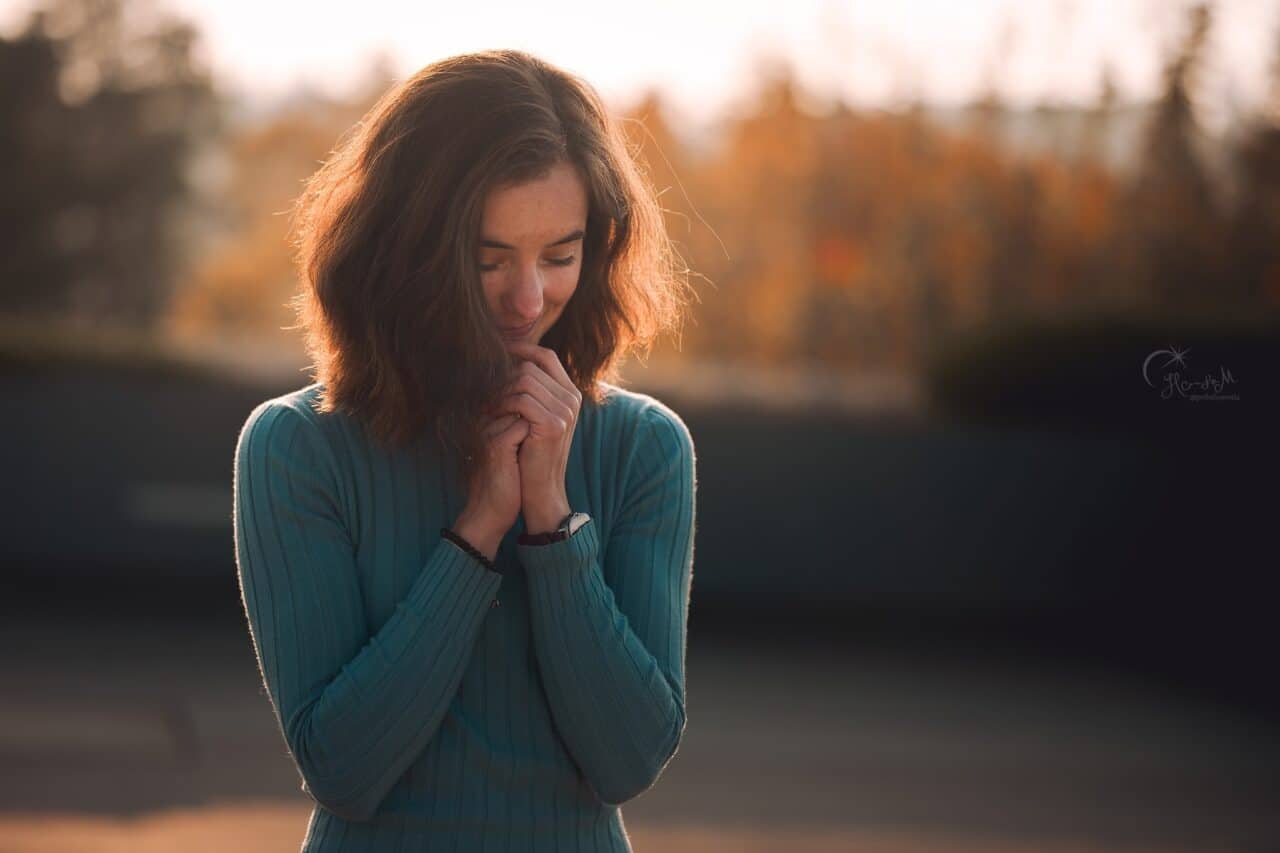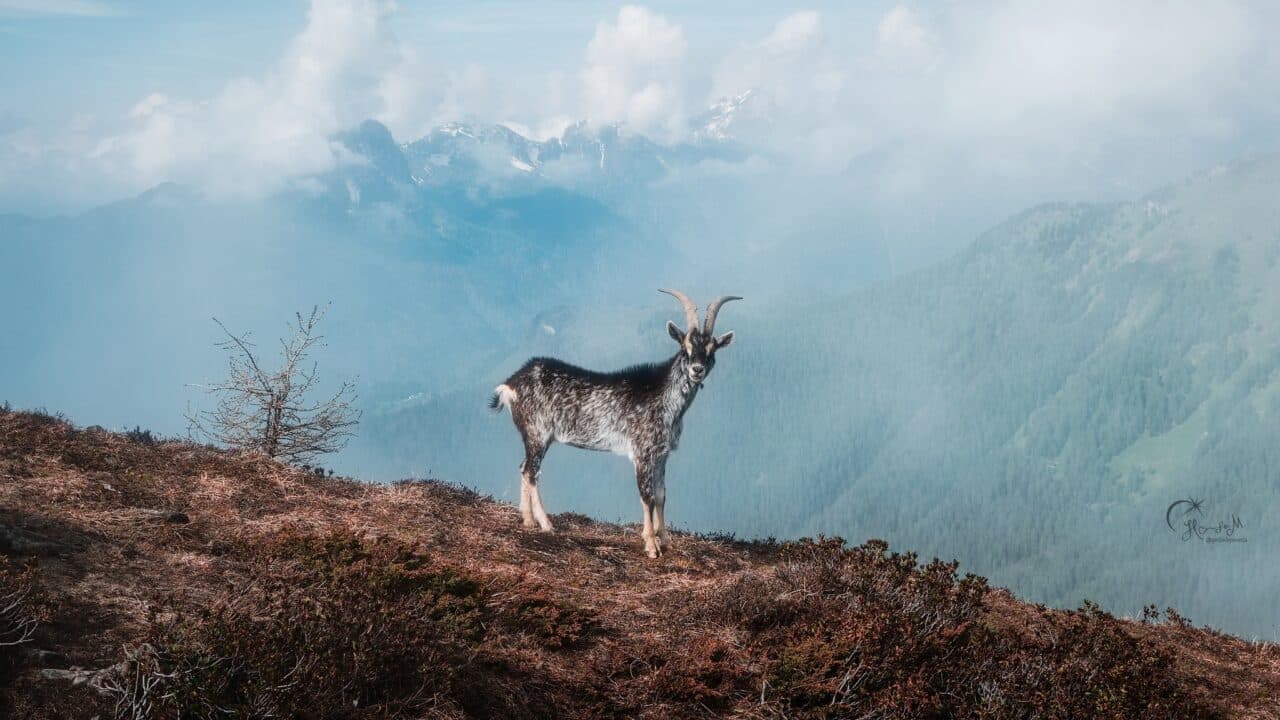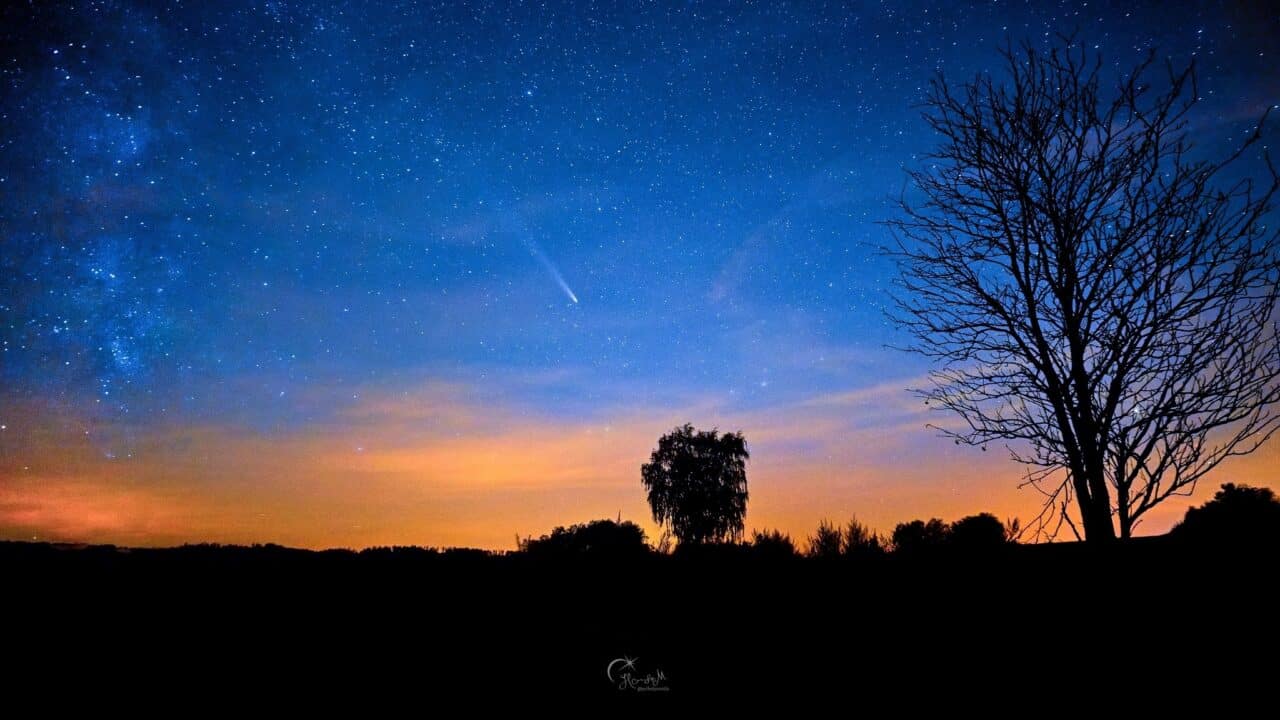APS-C vs. Full-Frame: When Sensor Size Matters
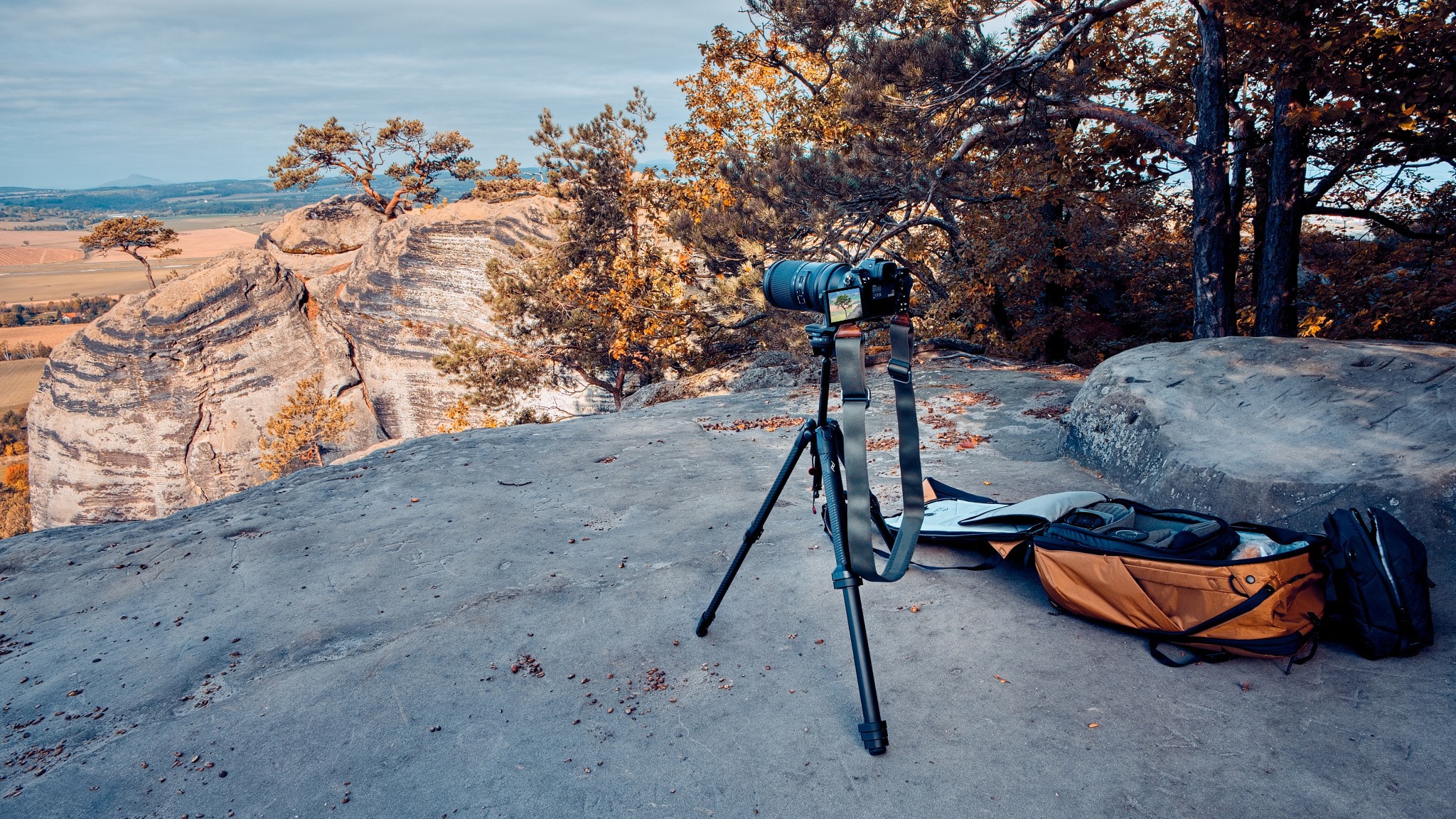
A lot has been written about the differences between Full-Frame (FF) and crop (DX, APS-C) sensors. The difference in features and functions can get complicated. In this article, I’ll explain these features using practical examples and take a look at the advantages of each system, and where they fall short.
Let’s look at what’s affected by sensor size, and when you should think about it. I’ll focus on the major differences in angle of view and how it affects blurred parts of the image (bokeh).
Sensor size
There are camera brands where a smaller sensor automatically means an inferior system. This is not the case with Nikon cameras. Nikon puts its best components even in its lower-end cameras. For example, look at the new Z50 II.
Full-frame cameras have sensors that are the same size as the original 35mm film frame (36 x 24mm), while APS-C cameras have a sensor size of 24 x 16mm.
Camera size
One of the reasons why even professional photographers purchase APS-C cameras is their size and weight. Smaller sensors allow for a smaller lens and camera body, reducing the size and weight of the entire setup. This is a big plus when traveling.
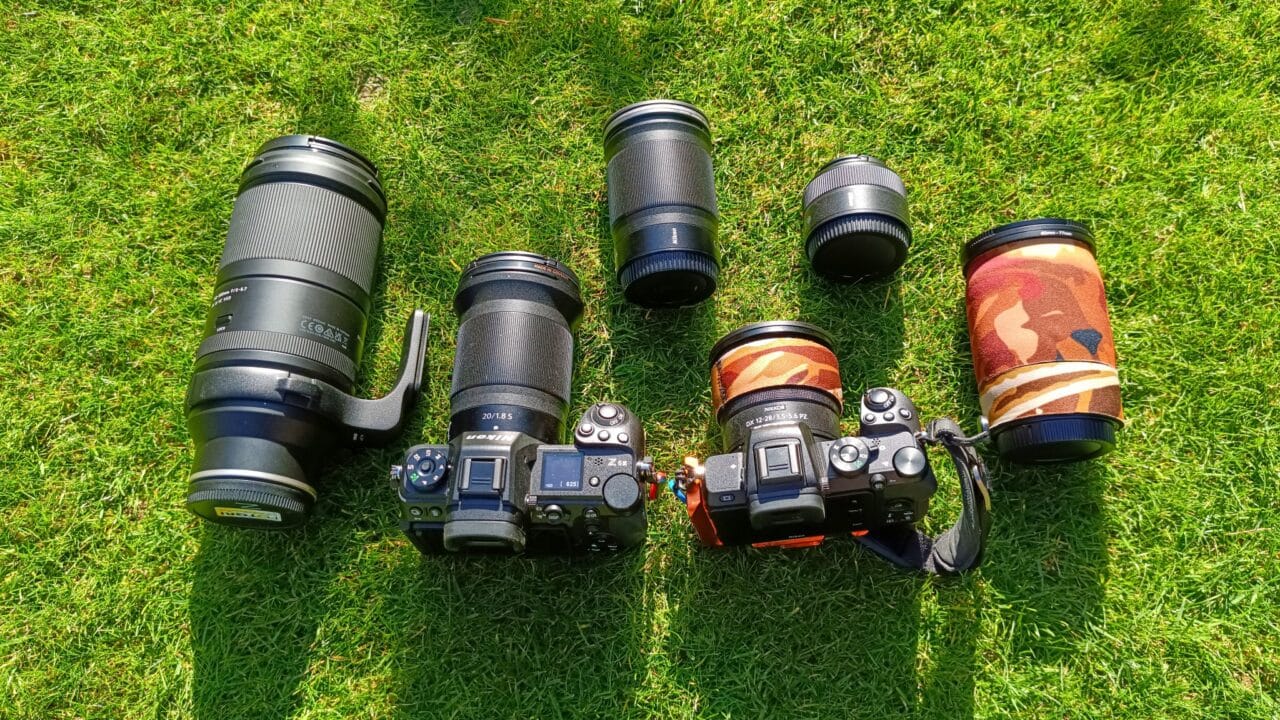
Angle of view and focal length—Crop factor
There’s a misconception that lens focal length changes with the crop factor. Lens focal length remains the same, only the angle of view as seen through the lens changes depending on sensor size.
On a smaller sensor, the angle of view is the lens’ focal length multiplied by the crop factor (or the ratio of the size of the smaller sensor to the larger sensor; for Nikon, it’s 1.5x; for Canon, it’s 1.6x).
For better clarity, I’ll be using these icons with my photos:
To give you a better idea, this 150mm lens has a 16° angle of view on a FF. When I put it on an APS-C, the same lens now has a 12°angle of view, which is the same thing as putting a 225mm lens on a FF (150*1.5).
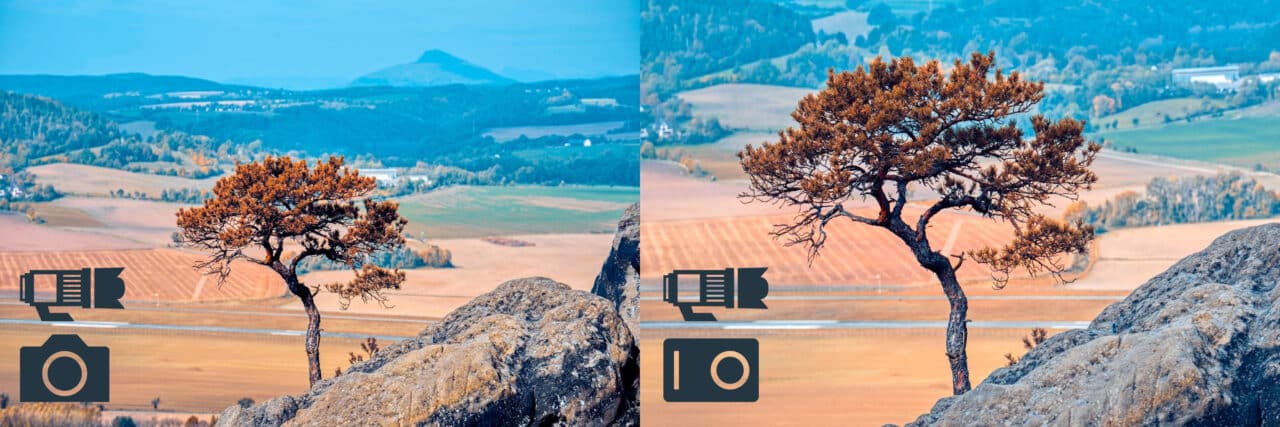

In other words, if we want the same 16° angle of view on the smaller sensor as on the larger sensor, we need to use a 100mm lens (150/1.5).
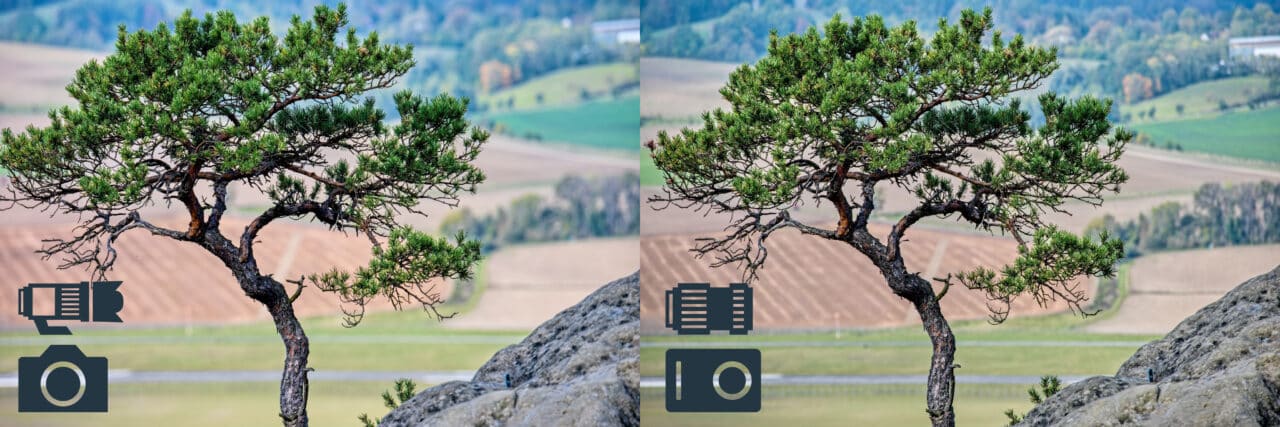
For wildlife photography, a smaller sensor comes in handy because it brings us closer to objects in the distance. A smaller lens is sufficient even at very large distances. With a 500mm lens, we get the same angle of view as if we had a 750mm lens on a larger sensor.
If you only consider focal length, a larger sensor is beneficial for landscape and night photography. This is because high-quality, fast, wide-angle lenses are more available. For a very wide 104° angle of view, we only need a 14mm lens on FF, but for APS-C we need a lens with a focal length below 10mm, which is more difficult to design. High-quality and fast lenses of this type are in limited supply.
For portraits, it’s a tie. You can easily use the same quality glass on both systems, you just have to consider the crop factor. The effect of sensor size on bokeh is much more important for portraits.
Depth of field and bokeh
You can learn about the physics of depth of field at different focal lengths in textbooks. If you’re interested in learning more about the topic, read up on hyperfocal distance. In this article, I’ll take a look at its practical applications.
The whole issue is a bit more complicated, but in simple terms—The whole frame and its depth of field can be divided into thirds. One third of the plane is the distance at which we focus and the remaining two thirds are beyond this plane. The closer the plane of focus is to your camera, the smaller the depth of field.

Depth of field is the distance at which an image is acceptably sharp. The hyperfocal distance is the point of focus that makes the entire image sharp at a given aperture.
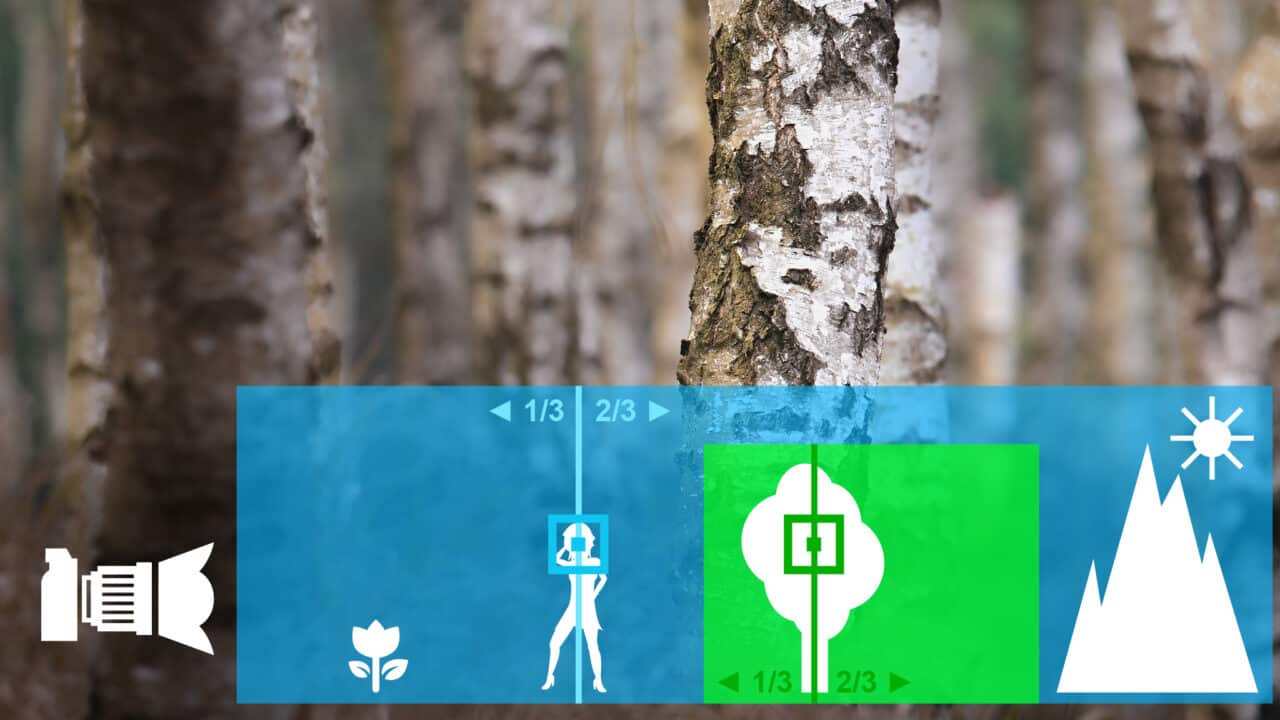
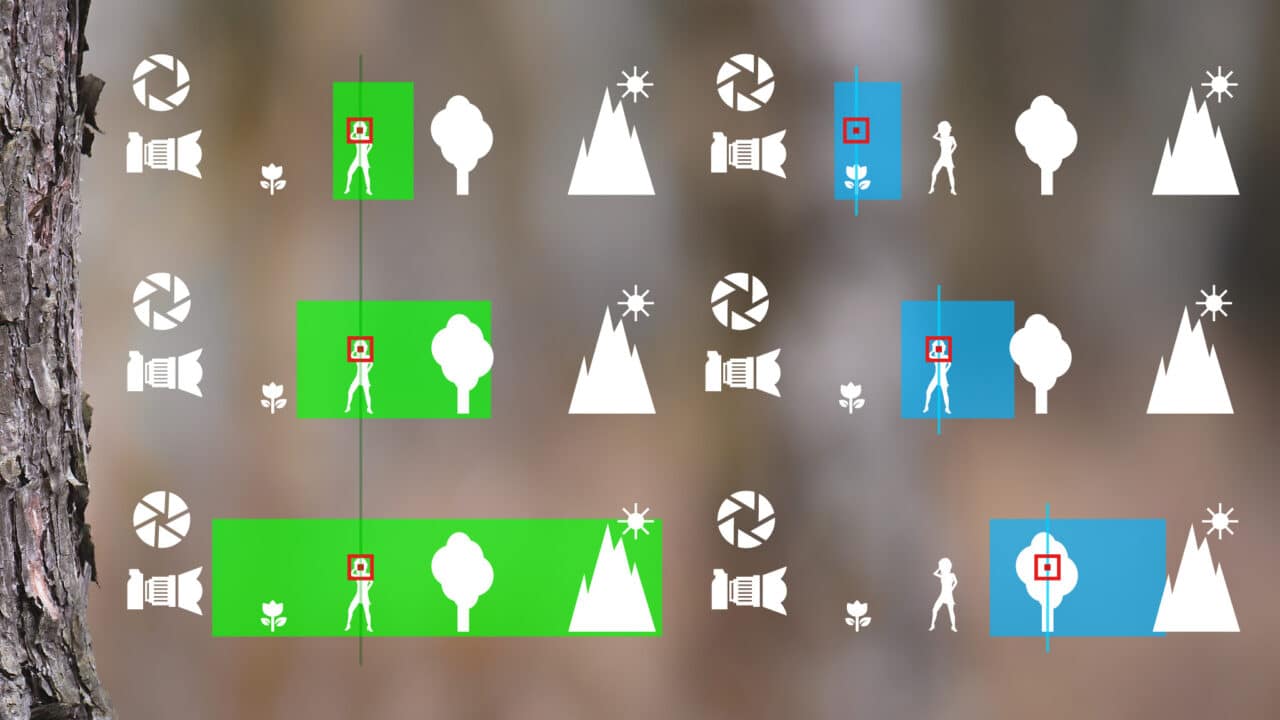
Depth of field is dependent on the focal length of the lens. Therefore, we can say smaller sensors have a greater depth of field because we use a lens with a smaller focal length for the same angle of view.
This also affects the bokeh. Larger sensors result in more subtle bokeh. This is also because larger sensors have large cells and the artifact contours are more subtle in blurred backgrounds.
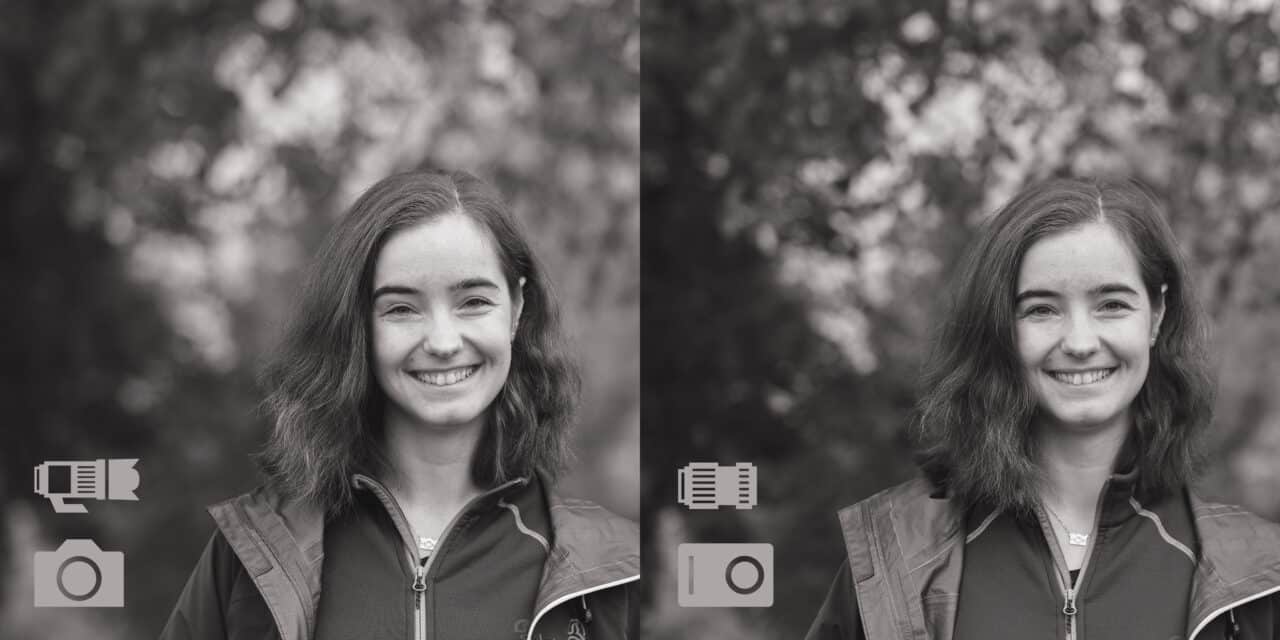
For portraits, we usually want a shallow depth of field to nicely separate our subject from the background. For landscapes, on the other hand, we want the depth of field to be as large as possible so all parts of the image are sharp.
If you have a 13mm lens on a smaller sensor, the image will be sharp from 60cm to infinity at f/8. But if you have a 20mm lens on a larger sensor at the same angle of view, the image will be sharp from 90cm at f/8.
If you have a subject closer than this focusing distance in your composition, you have to use a large aperture (most likely with some diffraction issues) or use the focus stacking method.

Old lenses had the advantage of having the effect of f-number/aperture on depth of field marked on them. Today, we can use mobile applications to accurately determine this.
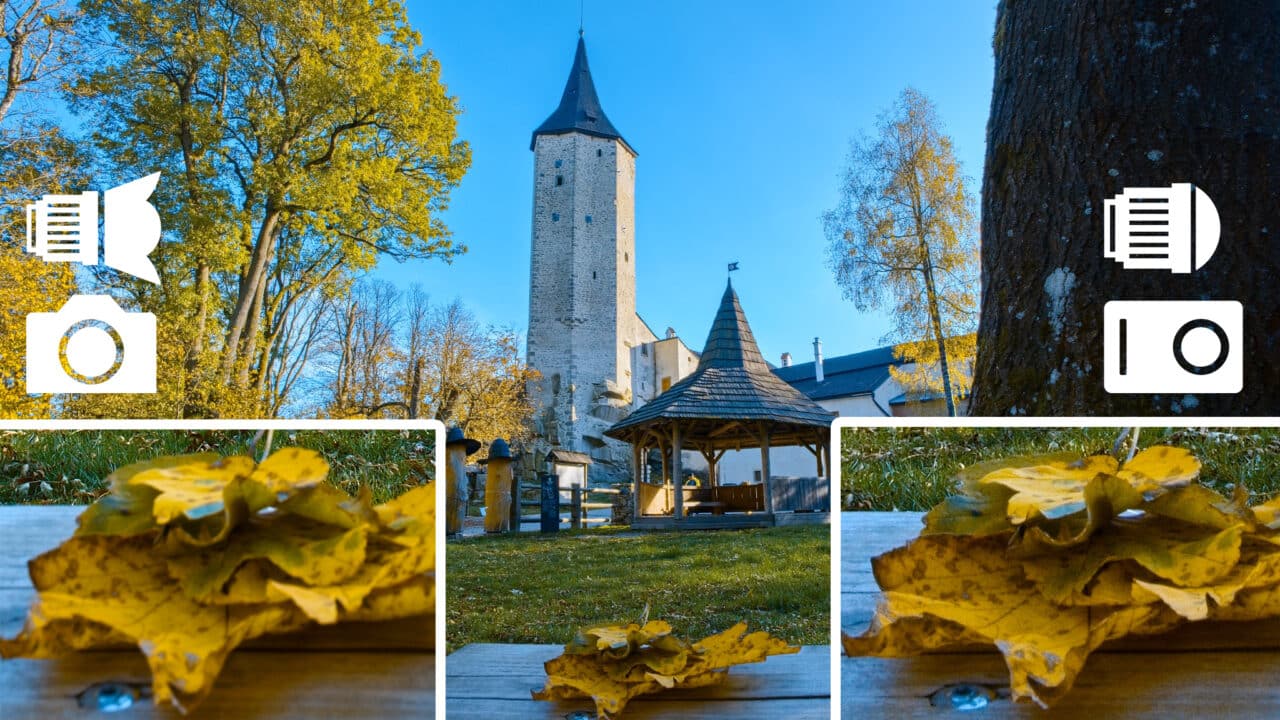
The difference may not be noticeable when printing to letter (A4) size, but with larger formats, it will be noticeable. The question remains whether or not it’s natural for humans to view an image like this in focus, but that’s for each photographer to decide.
Image quality in low light (digital noise)
In low light, there’s one rule of thumb—The newer and more professional the camera, the less noise it produces. A larger sensor has larger light-sensitive cells and can accommodate more luminous flux, and is better for image rendering in low light.
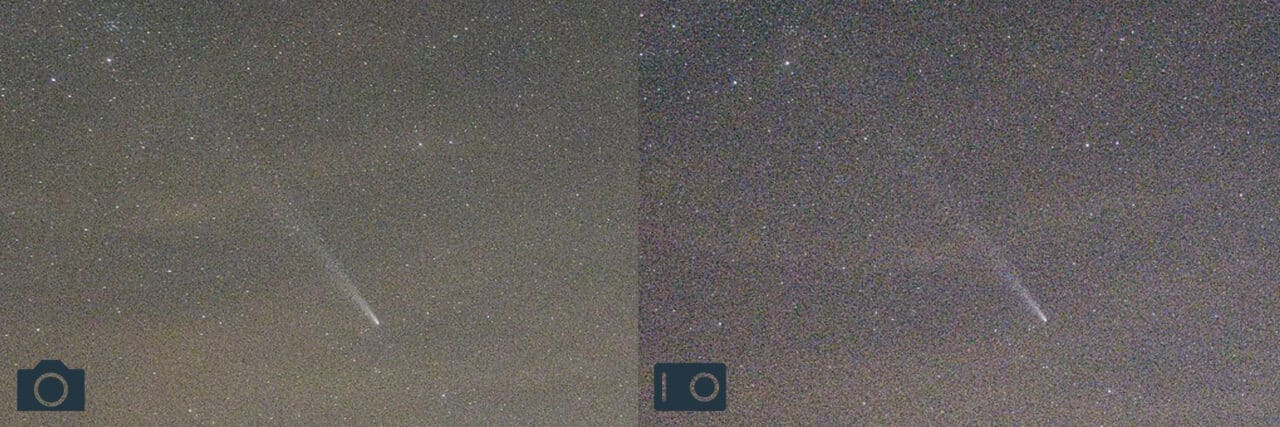
When comparing the two images, you can see that the smaller sensor contains grainier noise and more color noise, which is harder to work with. But we still have to take into account the difference in age of the technology with the Z50 being 5 years older than the Z6 III. It would be interesting to compare the noise level with the new Z50 II, which was not yet on the market at the time of testing.
Pros of FF sensors
- Lower noise level in low light
- More availability of fast, wide-angle lenses
- More shallow depth of field and subtle bokeh
- Good for portraits and night photography
Pros of APS-C sensors
- Due to the crop factor, telephoto lenses have greater zoom at longer focal lengths
- More compact and lightweight
- Greater depth of field and sharpness of the entire image at lower apertures
- Good for wildlife and landscape photography
In closing
I hope you now have a better understanding of camera sensors. I hope this article makes it easier for you to decide between FF and APS-C. It’s important to consider what you’re going to be using the camera for.
The next important deciding factor should be the camera’s features. For example, sensor stabilization, autofocus speed, and focus accuracy for the eye, animals, etc. The layout of the control buttons or how the display tilts is also important for everyday use. From a professional standpoint, it is good to remember dual card slots, the ability to connect other devices, battery life, and power bank charging. And last but not least, ergonomic grip.
All of these factors are important to consider before purchasing your camera. If you are unsure, I recommend renting the cameras you are considering. Renting gives you the opportunity to feel the camera and test all the features that are important to you.
